The 50th General Assembly and 47th World Chemical Congress of the International Union of Pure and Applied Chemistry (IUPAC) took place in Paris, France, from July 5–12, 2019. More than 2,400 participants from 67 countries took the opportunity to celebrate IUPAC’s 100th anniversary, 150 years of the periodic table of the elements (IYPT 2019), and to take part in a conference program merging all facets of chemistry. IUPAC is a meeting place for chemists from all fields, of all ages, and from around the world, and a springboard for launching new cooperations.
Opening Ceremony
The meeting was opened by Professor Clement Sanchez, Chair of the IUPAC congress and Collège de France, Paris, Professor Qi-Feng Zhou, President of IUPAC and Chinese Academy of Sciences, Professor Marc Taillefer, President of the French Chemical Society (SCF; Société Chimique de France) and Research Director at the CNRS, Montpellier, France, Professor Sébastien Candel, Past-President of the French Academy of Sciences and Emeritus Professor of École Centrale Paris, Professor Alain Schuhl, Director General for Science, CNRS, France, Gilles Zuberbuhler, Office of France Chimie and President/Managing Director WeylChem Lamotte SAS, Trosly-Breuil, France, and Dr. Thierry Coulhon, Counselor for Education, Research & Innovation of the French Republic.
They all see chemistry as central science and chemists as the leaders to solve key issues of our world. Still, Irrationality is raising. Thierry Coulhon gave the example that many French say that their wines are without chemistry. But how can they say that with so much chemistry in wine? It is a great challenge to better explain science to the public, to implement better chemistry and science education, but also to improve research and strengthen the link between industry and academia. This is essential to our future. Professor Steven Chu concluded: “Chemists have to lead the change to save the planet.”
Professor Jean-Marie Lehn, Honorary Chair of IUPAC2019 and 1987 Nobel laureate from the University of Strasbourg, France, said in his talk that “It is nice to be a chemist these days.” This year, we celebrate a lot of anniversaries of great persons: the birth of Vladimir Markovnikov, the death of Emil Fischer, the death of Leonardo da Vinci, to name a few. Chemistry is the science of the structure of matter and of transforming it. Chemistry is an information science. The molecules store information. Transforming matter and storing information open the door for the creative imagination of chemists, not only to discover but to invent. Leonardo da Vinci already said: “Where Nature finishes … man begins … to create an infinity of species”.
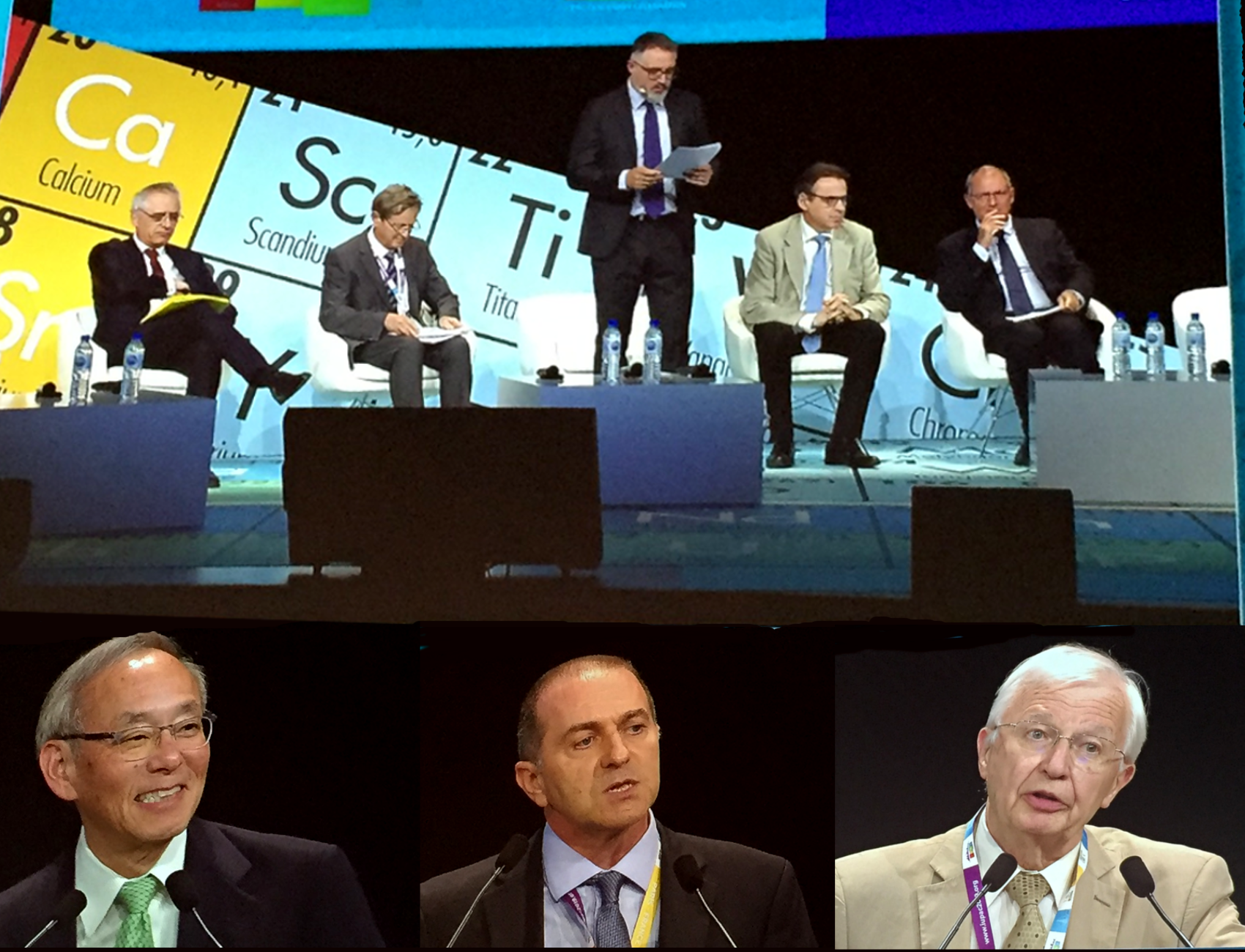
Figure 1. During the Opening Ceremony. (top left to bottom right) Dr. Thierry Coulhon, Professor Sébastien Candel, moderator, Professor Alain Schuhl, Gilles Zuberbuhler, Professor Steven Chu, Professor Marc Taillefer, Professor Jean-Marie Lehn.
Selected Plenary Talks
Skin-Inspired Electronics
The skin is conformable, stretchable, self-healable, and biodegradable. At the same time, it collects signals from external stimuli that translate into information such as pressure, pain, and temperature. Inspired by the complexity of this organ, Professor Zhenan Bao, Stanford University, CA, USA, develops organic-based electronic materials to mimic skin functions. They can be used in medical devices, robotics, and wearable electronics.
She and her group have developed a number of materials that are either semiconductive or conductive ranging from self-healing materials, stretchable materials, to even biodegradable materials. Examples include a power-efficient mechanoreceptor with a flexible organic transistor circuit that converts pressure into digital frequency signals [1]. The pressure range is comparable to that of a human grip. Another example is a wireless, battery-free, biodegradable touch sensor to monitor blood flow after surgery [2]. The sensor wraps around the healing vessel. Blood pulsing past pushes on the inner surface of the sensor and changes its shape. The sensor’s capacity to store electric charge is altered, which doctors can detect remotely from a device located outside the body.
Bao and her team recently created a stretchable, polymer circuitry with integrated touch-sensors [3]. It allows detecting the footprint of an artificial ladybug. The material is made in squares of about two inches by two inches containing more than 6,000 individual signal-processing devices. A waterproof protective layer encapsulates the material. In addition, the team has developed a method to mass-produce this new class of flexible, stretchable electronics which is a critical step on the path to commercialization. The prototype was stretched to twice its original dimensions and back again more than one thousand times while maintaining its ability to conduct electricity and without significant damage or loss of sensitivity.
Three Tenors for an Ode to Soft Machines
The Nobel Prize in Chemistry for 2016 was awarded jointly to Professor Jean-Pierre Sauvage, University of Strasbourg, France, Professor Sir J. Fraser Stoddart, Northwestern University, Evanston, IL, USA, and Professor Ben L. Feringa, University of Groningen, The Netherlands, “for the design and synthesis of molecular machines”. At this meeting, these three developers of the smallest machines joined for a musical ramble through their research.
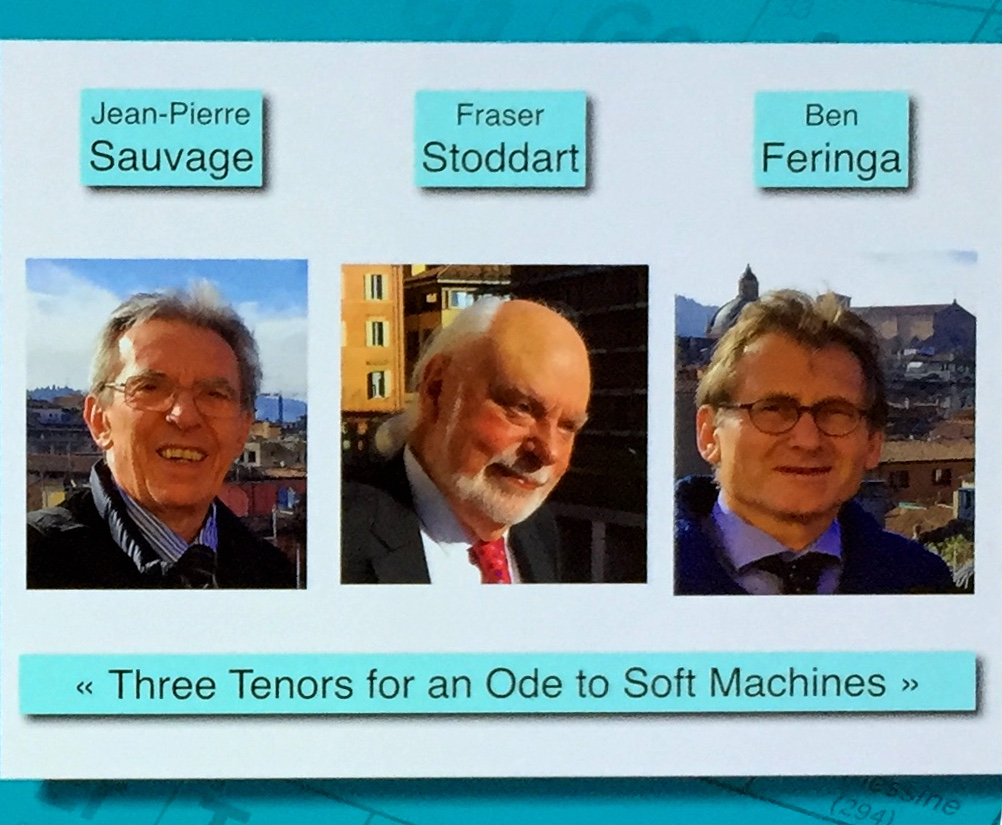
Then Sir Fraser Stoddard summarized his work with animations of his molecular shuttles, switchable catenanes, 140 kbit molecular memory, and dual molecular pumps to the tune of “non, je ne regrette rien” from Edith Piaf. In 1991, Stoddard demonstrated that a molecular ring on a thin molecular axis in a rotaxane can move along the axis. This was the starting point for many mechanically interlocked molecules (MIMs) and molecular machines.
In 1999, Ben Feringa developed the first molecular motor. He and his team developed molecular switches—binary systems at the molecular level—and later molecular rotors—systems that can go back and forth. He showed in a video how nanomotors work. The video shows a “Dance your Ph.D. Contest” during which his group won the bronze medal.
Taking molecular systems out of equilibrium into energy-filled states allows controlling the movements of these molecules.
Orientation of Sugars on Cell Surfaces
All cell surfaces are covered by a thick layer of carbohydrates, called glycocalyx. The carbohydrates are conjugated in various forms, such as in glycoproteins and glycolipids. The glycocalyx of a cell connects its inside with the outside. It is involved in numerous complicated, biological processes including cell-cell communication.
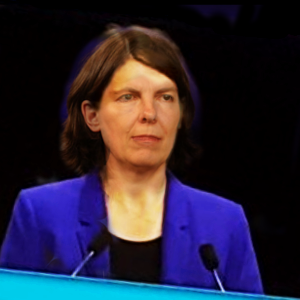
Bacteria can dock to the glycocalyx and cause infections. Professor Thisbe K. Lindhorst, Christiana Albertina University of Kiel, Germany, and her team synthesized and tested an approx. 4 nm thick layer imitating the glycocalyx of cells [4]. They covered an extremely thin gold surface with a precisely defined saccharide covering, coupled to azobenzene. This hydrocarbon containing a nitrogen bridge works as a hinge controlled by light. In this model system, the orientation of the ligand was altered in a controlled manner without changing the recognition quality of the ligand itself.
Irradiating the system with light with a wavelength of 365 nm turns the saccharide molecules away from the Escherichia coli bacteria adhered to the synthetic surface. This leads to considerably fewer pathogenic bacteria docked to the synthetic surface. When switched on by the light of 450 nm wavelength, the structures reorientate such that the bacteria cells can dock on once again. In this way, E. coli adhesion can be controlled.
To structurally modify membranes on demand, Lindhorst embedded photosensitive, amphiphilic glycolipid mimetics containing a photoswitchable azobenzene unit into model membranes [5]. And to add a new aspect to these recognition studies, she recently designed the first heterobivalent glycoclusters as diastereomeric pairs [6]. These diastereomeric glycoclusters differ in just one configuration at their molecular scaffold. The two diasterioisomeres lead to completely different bacterial adhesion behaviors. This result suggests that very subtle changes of ligand orientation are a regulating principle in carbohydrate recognition on the cell surface.
Challenges of Preserving Chemistry
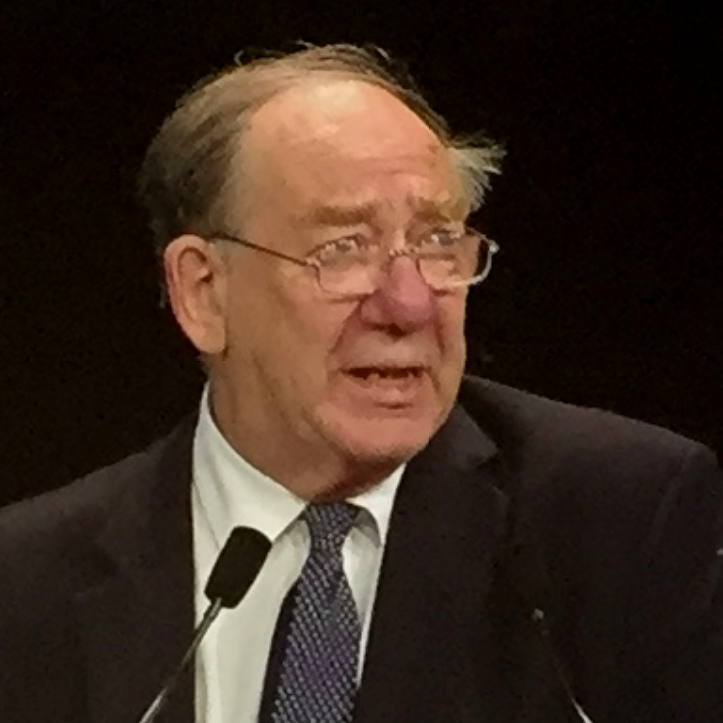
To decide what to preserve and what not to preserve is a challenge. But to study the past means to understand the present and inform the future. Science curators, thus, have to ensure that significant objects are preserved for the future, even if their importance is not generally appreciated at the time. It is a highly responsible job, because what is not acquired is usually discarded, and most of it disappears without a trace.
Other Activities
IUPAC100 Celebration
Professor Supawan Tantayanon, Chulalongkorn University, Thailand, and Professor Javier Garcia Martinez, University of Alicante, Spain, led through the session which looked back at recent activities and on how IUPAC is shaping the future. Recent activities included the first Global Women’s Breakfast held in February. The second one will be on February 12, 2020.
With the Periodic Table Challenge, UPAC is hosting an online challenge about the periodic table of the elements aimed at a global audience of young students. It runs throughout 2019. A player has to choose an element as an avatar and answer 15 randomly chosen multiple-choice questions about the elements. The score will go towards the chosen element in the leaderboard where players can compare each other.
To show the rising stars of chemistry while celebrating 150 years of the periodic table, the International Younger Chemists’ Network (IYCN) initiated the Periodic Table of Younger Chemists. When selecting a young chemist for each element from the hundreds of nominations, the jury not only took research and diversity into account but also activities in chemical societies and for the society. Hf is the only element that went to a historic chemist: to Henry Moseley. He was an English physicist who experimentally demonstrated that the atomic number and not the atomic weight determines the major properties of an element. Moseley predicted the existence of four new elements which we today know as Tc, Pm, Hf, and Re. Henry Moseley was shot and died at the age of 27 in World War I.
During the session, the final six elements of the periodic table of younger chemists were announced. Nh: Dr. Nozomi Sato, RIKEN, Japan, Fl: Dr. Leonid V. Skripnikov, Petersburg Nuclear Physics Institute, Russia, Mc: Dr. Galina Knyazheva, Flerov Laboratory of Nuclear Reactions at the Joint Institute for Nuclear Research, Russia, Lv: Dr. Jacklyn M. Gates, Lawrence Berkeley National Laboratory, USA, Ts: Dr. Nathan T. Brewer, Oak Ridge National Laboratory, USA, Og: Dr. Sofiya Aydinyan, National Academy of Science of Armenia.
Round Table of World Chemistry Leaders
Some of the leaders of the chemical industry, Dr. Ilham Kadri, Solvay Group’s CEO, Brussels, Belgium, Dr. Martin Brudermüller, BASF’s CEO, Ludwigshafen, Germany, Andrey A. Guryev, PhosAgro’s CEO, Moscow, Russia, and Thierry Le Hénaff, Arkema’s CEO, Colombes, France, discussed the chemical industries’ contributions and opinions to sustainability and diversity.
Sustainability is the driver for the strategy of BASF. The company wants to grow CO2 neutral until 2030, i.e., to grow without producing more CO2. By this, Martin Brudermüller thinks, they are pushing the chemical industry. To achieve this goal, a lot of innovation is needed to optimize existing processes, to gradually replace fossil fuel with renewable energy, and to develop new, low-emission processes. He is proud that there are many good ideas within the company and that young people are eager to work for a company with such a target. If you stimulate creativity, your competitiveness increases.
According to Ilham Kadri, academia has a big duty in sustainability. Compared to the industry, they are the innovators who have no boundaries. Collaboration between academia and industry is important. Brudermüller adds that society also has to take its stake. The circular economy will cost more and for sustainability, consumers will have to change their habits. Besides, if you talk about CO2 reduction in the chemical industry, you cannot get rid of energy. But you can shift energy from fossil to renewable. If we do so, we need a political framework creating an environment which allows us to establish this by, for example, ensuring renewable energy to competitive prices.
Ilham Kadri explains that diversity is important to increase innovation and to compete for the best employees: 1. Companies with more women in leadership are more profitable and more sustainably profitable. 2. For Solvay, it is not only about gender but about all the other dimensions of diversity like nationality, age, disability, ethnic origins, sexual orientation, backgrounds, education, culture, and diversity of thoughts. Inclusion is important. At Solvay, they call this Diversity & Inclusion (D&I). If a company does not create an inclusive environment that values and respects differences, the diversity will leave in her opinion. And the best people will always leave first.
The amount of women in management positions is lower than the total number of women within the company. We are repairing this, Brudermüller said. He thinks that it is important to demonstrate fairness. At BASF, they are taking reasonable efforts to ensure that there are no differences anymore in payment or in how to decide about careers. This is still not normal in many companies. But all of this takes time. You cannot enforce diversity at the expense of competence. If you do that you ruin the culture in the company.
Ilham Kadri adds that a female CEO is not routine yet and it does not solve the problem of diversity. Solvay still has huge challenges in her opinion. It is about the pipeline. We need to have those diversity candidates available when there is a job opening. We see a lot of women getting into college, into university, but then there is one point in their career where we lose many of them. The question is why. Inclusive means the support of families, the support of ecosystems. She relocated 13 times and has lived on four continents and is thankful to the bosses who supported her. It was never a problem that she is a woman or that she has a family, she said.
Figure 2. Discussing sustainability and diversity: Round Table World Chemistry Leaders (top left to bottom right) Dr. Ilham Kadri, Solvay, Dr. Martin Brudermüller, BASF, Andrey A. Guryev, PhosAgro, and Thierry Le Hénaff, Arkema.
Snapshots from the Conference
Figure 3. IUPAC Council. The Council is the primary IUPAC governing body and is composed of delegates from the national adhering organizations (NAOs) to IUPAC. (Foto: Lidong Han/CCS).
Figure 4. The presidents of 15 chemical societies signed a “Joint Framework Agreement on the United Nations Sustainable Development Goals SDGs” at the occasion of a Society Presidents’ Forum. The Forum was organized at the headquarters of the French Chemical Society (SCF) on the invitation of SCF and the American Chemical Society (ACS). (Foto: GDCh).
Figure 5. Meeting at a poster session: (left to right) Christoph Wulf, Head of Board of the Young Chemists Forum (JCF; JungChemikerForum) of the German Chemical Society (GDCh), Professor Austin Ochieng, Executive Director of the Kenya Chemical Society (KCS) and Technical University of Kenya, Nairobi, Dr. Hans-Georg Weinig, GDCh, Dr. Mark Cesa, president of IUPAC in 2014 and 2015 and INEOS Nitriles Process Technology, USA, Willis Collins Muganda and Tobias Wilcke, both Board Member of the JCF. (Foto: GDCh)
Figure 6. The International Younger Chemists Network (IYCN) organized a symposium to highlight the work of young chemist volunteers worldwide and their contributions to science outreach in their respective fields. Dr. Fernando Gomollón Bel (left) shared, e.g., ideas on how to tell the world about a just-published article to impact citations and funding.
Figure 7. The 2nd winner of the Chemistry – A European Journal Artwork Competition Yuliia Oleksii from Ukraine (middle). The award was presented by the journal editor, Dr. Ganna Lyashenko, and the member of the Advisory Board, Professor Jean-François Nierengarten, University of Strasbourg, France. 1st winner is Víctor Duarte Alaniz from Mexico, and 3rd is Joanna Cwynar-Wojtonis from Poland.
Figure 8. During the coffee breaks.
Figure 9. Professor Floris Rutjes, Vice-President of the Royal Netherlands Chemical Society (KNCV) and one of the creators of the Stardust periodic table of the elements with #chemquackers. The periodic table contains real elements and minerals.
Outlook
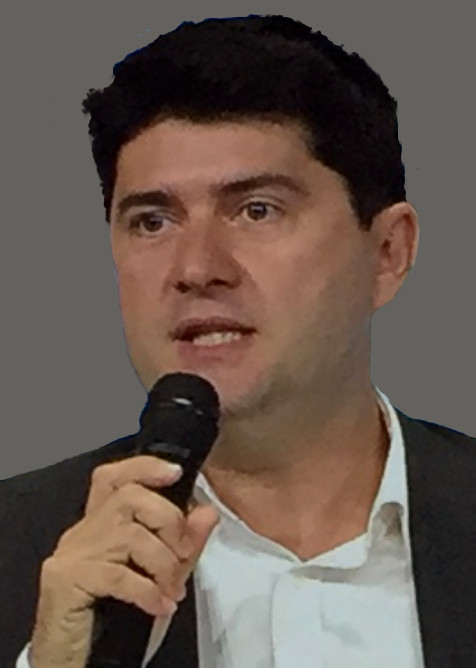
The 51st IUPAC General Assembly and 48th IUPAC World Chemical Congress will take place in Montreal, Canada, from August 12 to 20, 2021. It will be organized together with the Canadian Society for Chemistry (CSC). Professor Neil Burford, University of Victoria, Canada, is the Chair of the Organizing Committee.
The 2023 meeting will take place in Den Haag, The Netherlands, and the 2025 meeting in Malaysia.
References
[1] Benjamin C.-K. Tee, Alex Chortos, Andre Berndt, Amanda Kim Nguyen, Ariane Tom, Allister McGuire, Ziliang Carter Lin, Kevin Tien, Won-Gyu Bae, Huiliang Wang, Ping Mei, Ho-Hsiu Chou, Bianxiao Cui, Karl Deisseroth, Tse Nga Ng, Zhenan Bao, A skin-inspired organic digital mechanoreceptor, Science 2015, 350(6258), 313–316. https://doi.org/10.1126/science.aaa9306
[2] Clementine M. Boutry, Levent Beker, Yukitoshi Kaizawa, Christopher Vassos, Helen Tran, Allison C. Hinckley, Raphael Pfattner, Simiao Niu, Junheng Li, Jean Claverie, Zhen Wang, James Chang, Paige M. Fox, Zhenan Bao, Biodegradable and flexible arterial-pulse sensor for the wireless monitoring of blood flow, Nature Biomedical Engineering 2019, 3, 47–57. https://doi.org/10.1038/s41551-018-0336-5
[3] Sihong Wang, Jie Xu, Weichen Wang, Ging-Ji Nathan Wang, Reza Rastak, Francisco Molina-Lopez, Jong Won Chung, Simiao Niu, Vivian R. Feig, Jeffery Lopez, Ting Lei, Soon-Ki Kwon, Yeongin Kim, Amir M. Foudeh, Anatol Ehrlich, Andrea Gasperini, Youngjun Yun, Boris Murmann, Jeffery B.-H. Tok, Zhenan Bao, Skin electronics from scalable fabrication of an intrinsically stretchable transistor array, Nature 2018. https://doi.org/10.1038/nature25494
[4] Theresa Weber, Vijayanand Chandrasekaran, Insa Stamer, Mikkel B. Thygesen, Andreas Terfort, Thisbe K. Lindhorst, Switching of Bacterial Adhesion to a Glycosylated Surface by Reversible Reorientation of the Carbohydrate Ligand, Angew. Chem. Int. Ed. 2014. https://doi.org/10.1002/anie.201409808
[5] Franziska Reise, Jonas E. Warias, Kuntal Chatterjee, Nicolai R. Krekiehn, Olaf Magnussen, Bridget M. Murphy, Thisbe K. Lindhorst, Photoswitchable Glycolipid Mimetics: Synthesis and Photochromic Properties of Glycoazobenzene Amphiphiles, Chem. Eur. J. 2018. https://doi.org/10.1002/chem.201803112
[6] Jasna Brekalo, Guillaume Despras, Thisbe K. Lindhorst, Pseudoenantiomeric glycoclusters: synthesis and testing of heterobivalency in carbohydrate–protein interactions, Org. Biomol. Chem. 2019. https://doi.org/10.1039/C9OB00124G
Also of Interest
- Mark Cesa and the IUPAC,
ChemViews Mag. 2014.
https://doi.org/10.1002/chemv.201400064
Since the beginning of this year, Cesa has been the new President of IUPAC - Javier García-Martínez on the Commercialization of Research,
Vera Koester, Javier Garcia-Martinez,
ChemViews Mag. 2012.
https://doi.org/10.1002/chemv.201200143
How do you form a spin-off company from your research? J. García-Martínez talks about his experiences and how he finds time for his many roles - The Future of Chemistry is Global,
Vera Koester, Paula C. P. Bueno, Sophie Carenco, Christine Dunne, Lori Ferrins, Evijola Llabani, Nnanake-Abasi Offiong, Ilya V. Vorotyntsev,
ChemViews Mag. 2017.
https://doi.org/10.1002/chemv.201700099
Members of the newly formed International Younger Chemists Network (IYCN) talk about their ideas, aims, and work
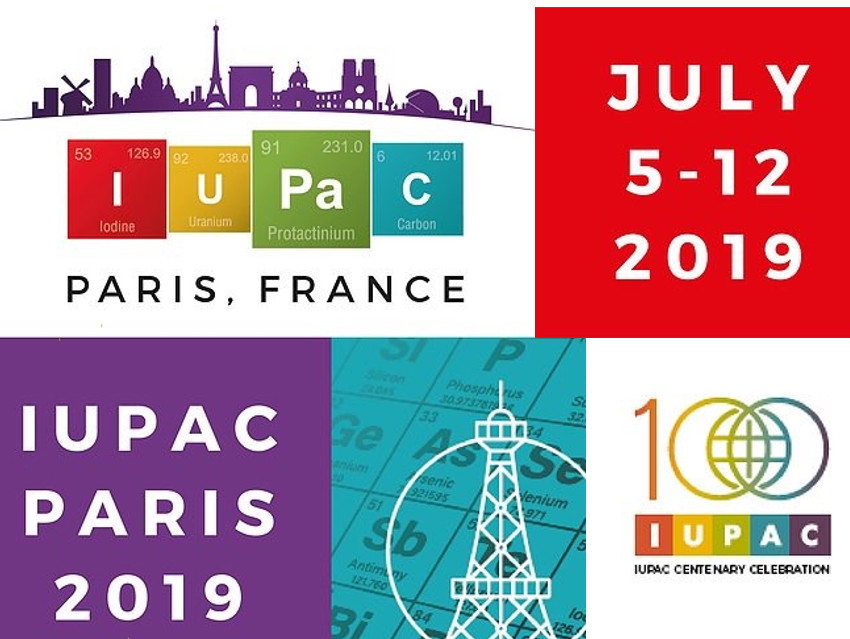
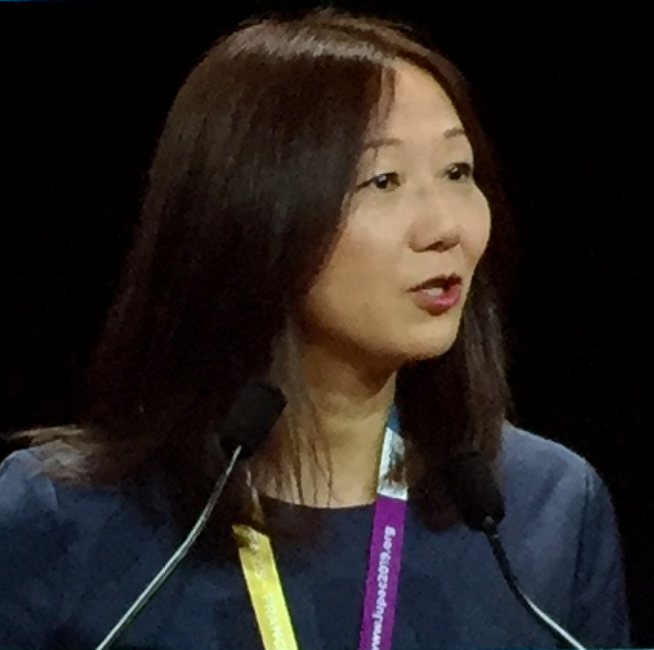
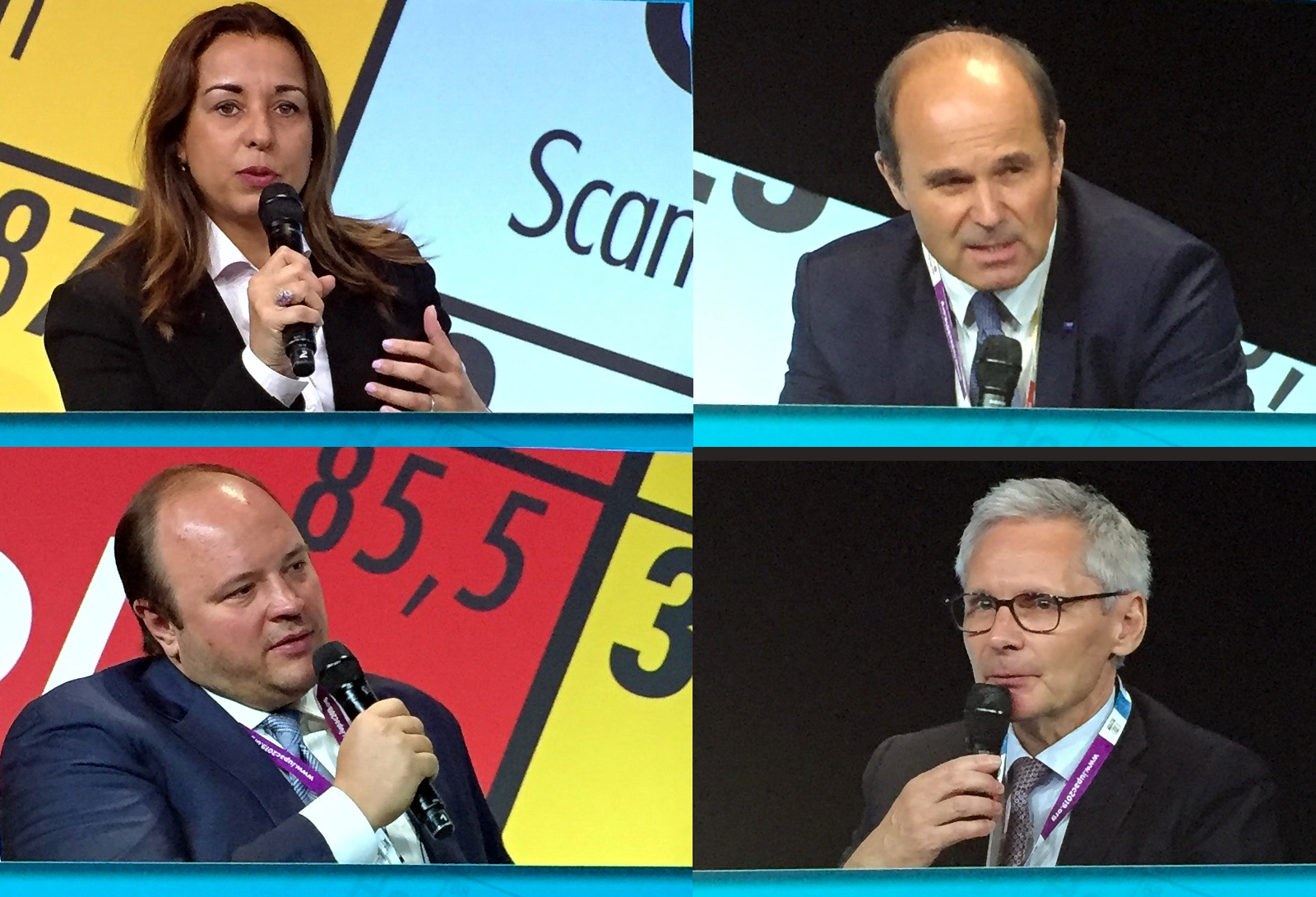

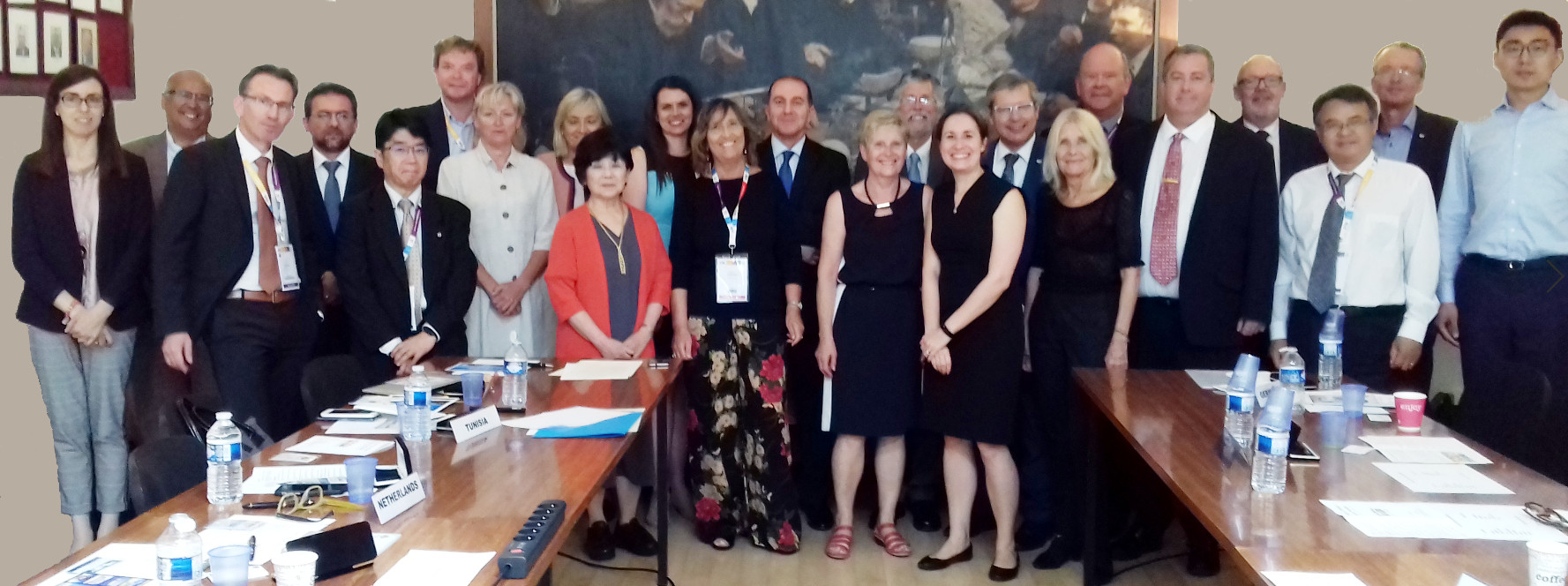
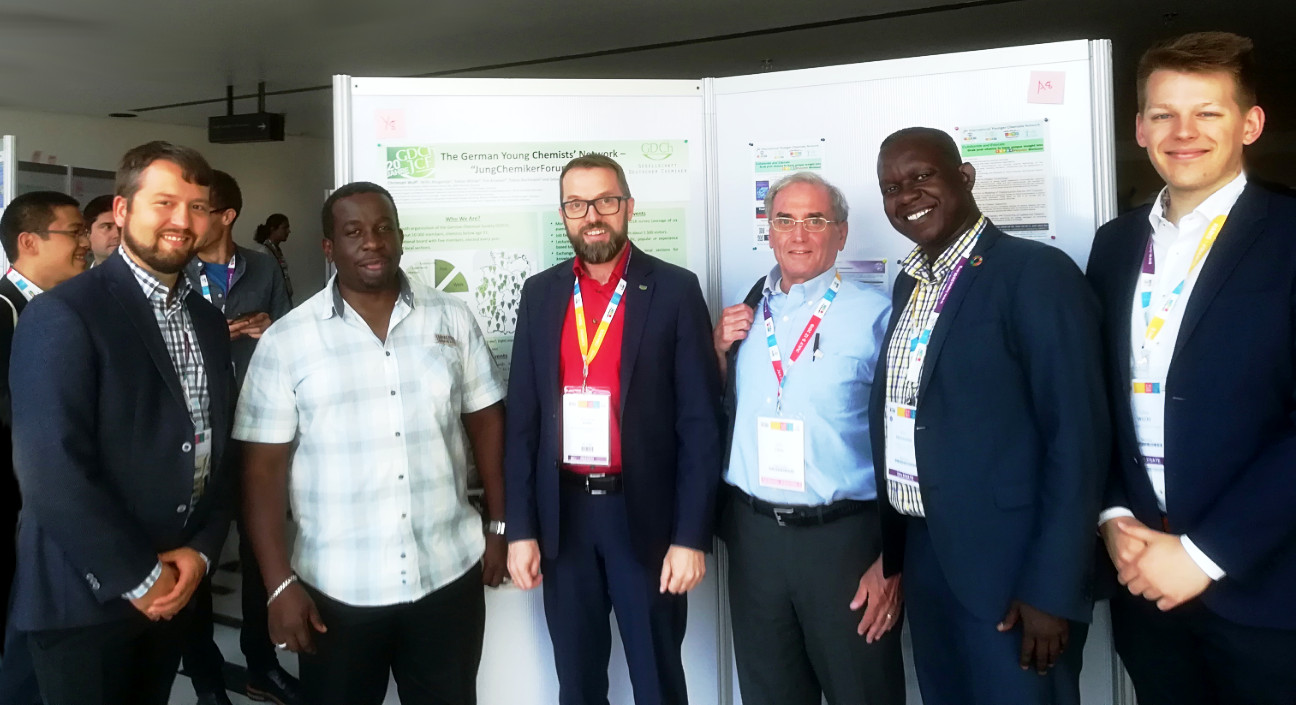
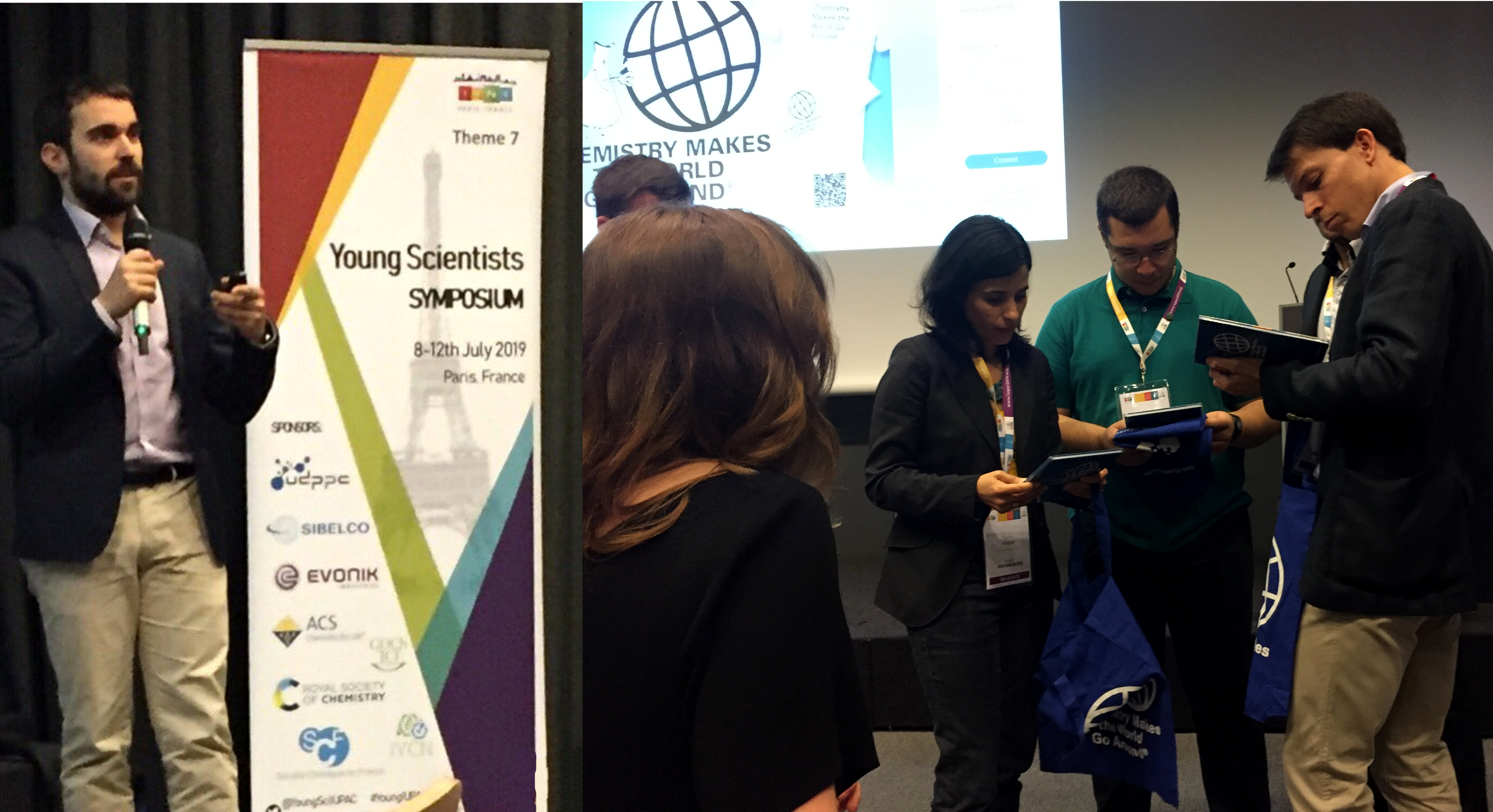
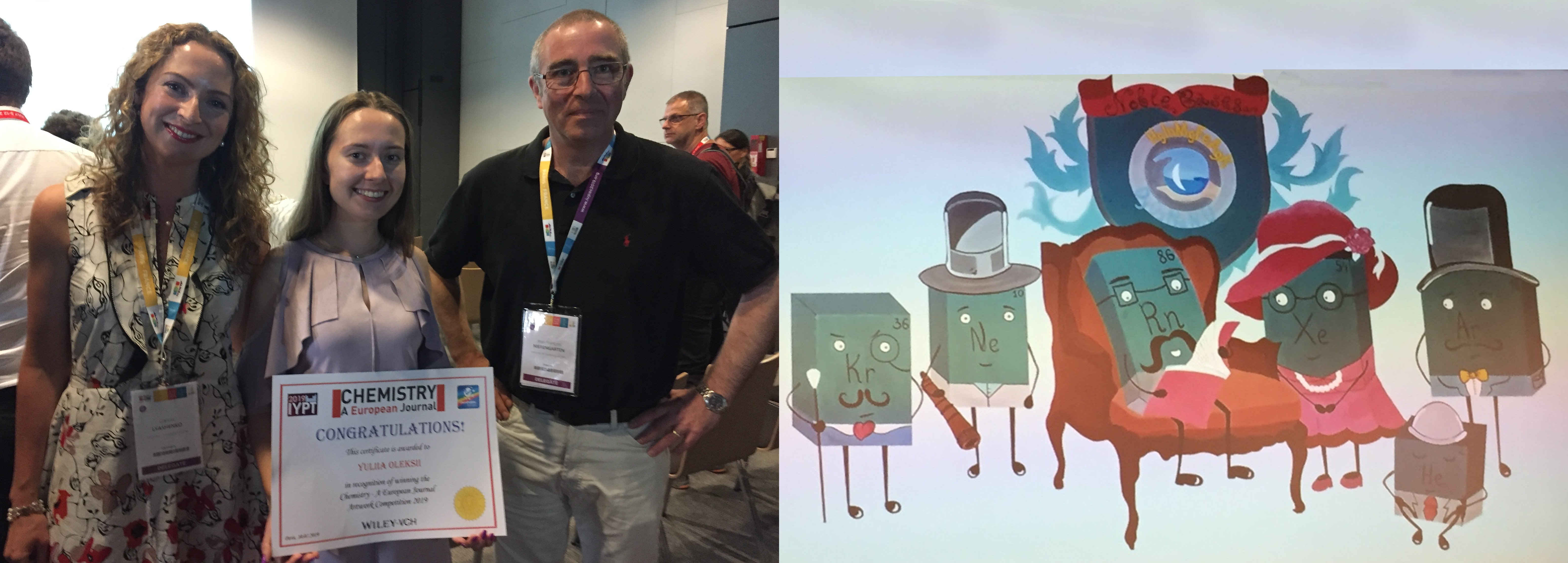
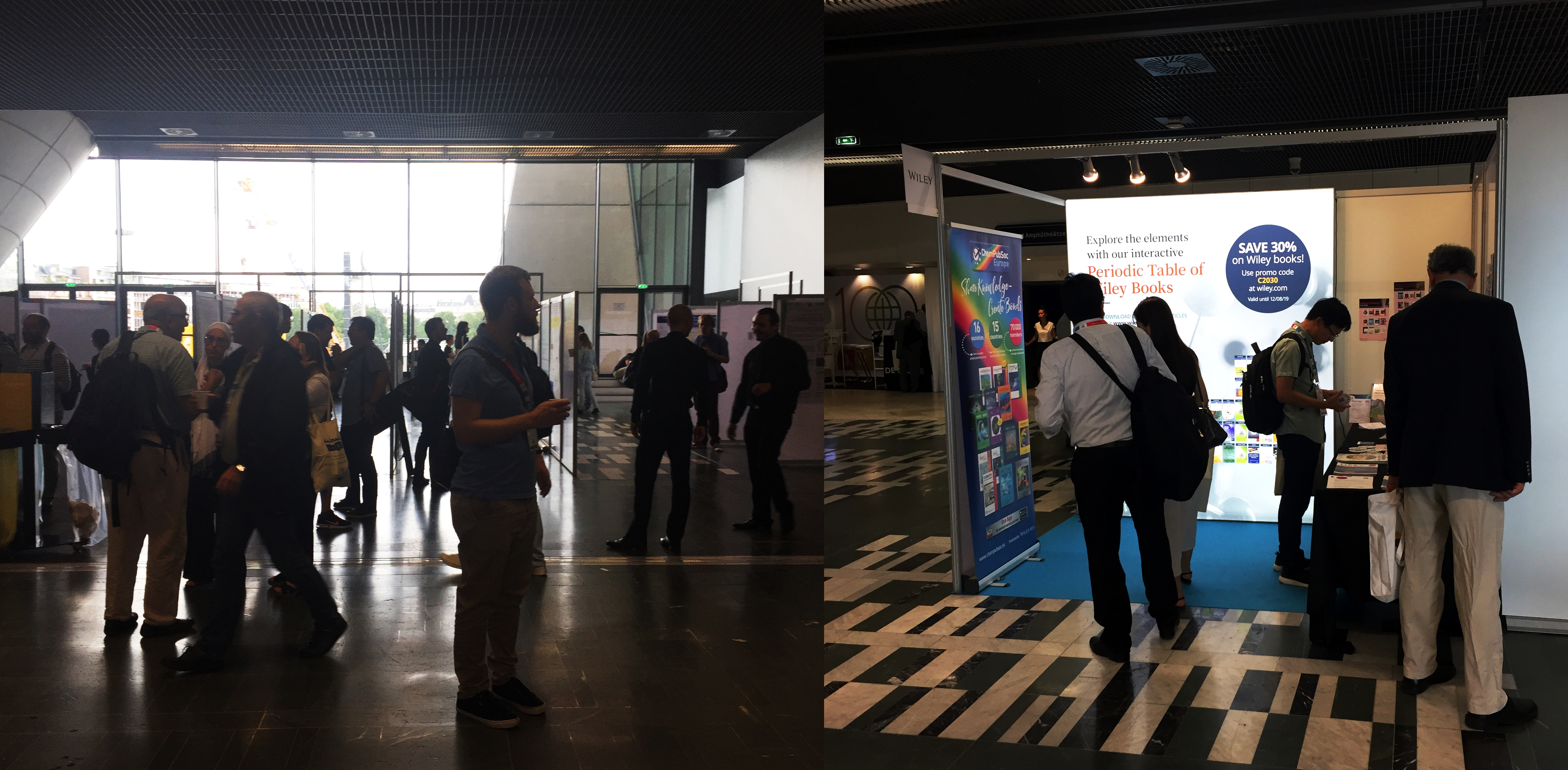
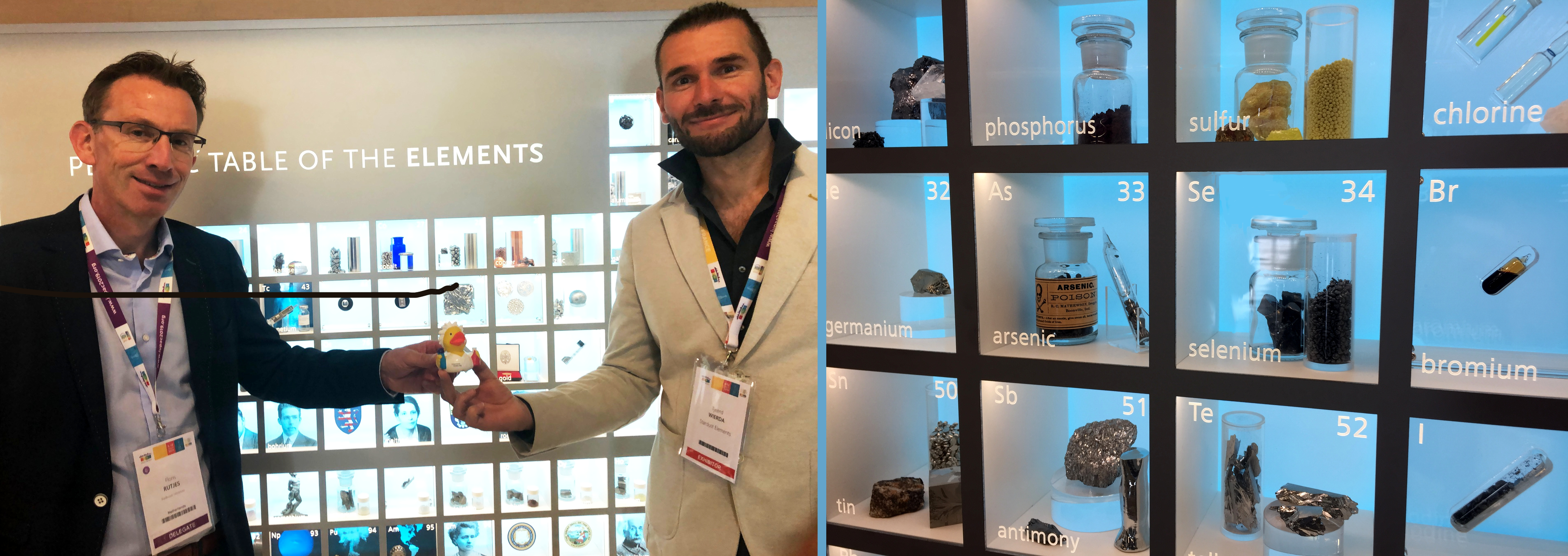




The Society Presidents’ Forum after signing the “Joint Framework Agreement on the United Nations Sustainable Development Goals (SDGs)”: The chemical societies “recognize the power of chemistry to achieve these goals and build a sustainable future for the benefit of humanity … While each country or region will advance the SDGs based on their unique needs, collaboration will multiply the force and effect of these efforts for the planet … The undersigned chemical societies commit to collaborating and identifying local solutions to global challenges – using the SDGs as a guide.”
(left to right):
Professor Angela Agostiano, President of the Italian Chemical Society (SCI, Società Chimica Italiana) and University of Bari,
Dr. Mohamed Chehimi, Institut de Chimie et des Matériaux Paris-Est, representing the Tunesian Chemical Society (SCT; La Société Chimique de Tunisie),
Professor Floris Rutjes, Vice-President of the Royal Netherlands Chemical Society (KNCV) and Radboud University,
Dr. Ian Jobe, Executive Director, The Chemical Institute of Canada (CIC),
Professor Joaquim Luís Bernardes Martins de Faria, Vice-President of the Portuguese Chemical Society (SPQ; Sociedade Portuguesa de Química) and Technical University of Lisbon
Professor Sonsoles Martín Santamaría, Secretary-General of the Royal Society of Chemistry of Spain (RSEQ) and Center for Biological Research of CSIC, Spain
Professor Luis A. Echegoyen, President-Elect of the American Chemical Society (ACS) and University of Texas, El Paso,
Professor Marc Taillefer, President of the French Chemical Society (SCF; Société Chimique de France) and CNRS, Montpellier,
Dr. Vicki Gardiner, President of the Royal Australian Chemical Institute (RACI) and Medicines Australia, Deakin,
Professor Peter Mallon, Vice-President of the South African Chemical Institute (SACI) and Stellenbosch University,
Professor Pilar Goya Laza, President of EuChemS and Instituto de Química Médica (IQM), Madrid,
Dr. Matthias Urmann, President of the German Chemical Society (GDCh; Gesellschaft Deutscher Chemiker) and Sanofi-Aventis Deutschland GmbH,
Professor Maki Kawai, President of the Chemical Society of Japan (SJ) and Institute for Molecular Science, Aichi
Dr. Robert Parker, Chief Executive Officer of the Royal Society of Chemistry (RSC),
Professor Zhigang Shuai, Vice President International of the Chinese Chemical Society (CCS).
(Photo © ACS)